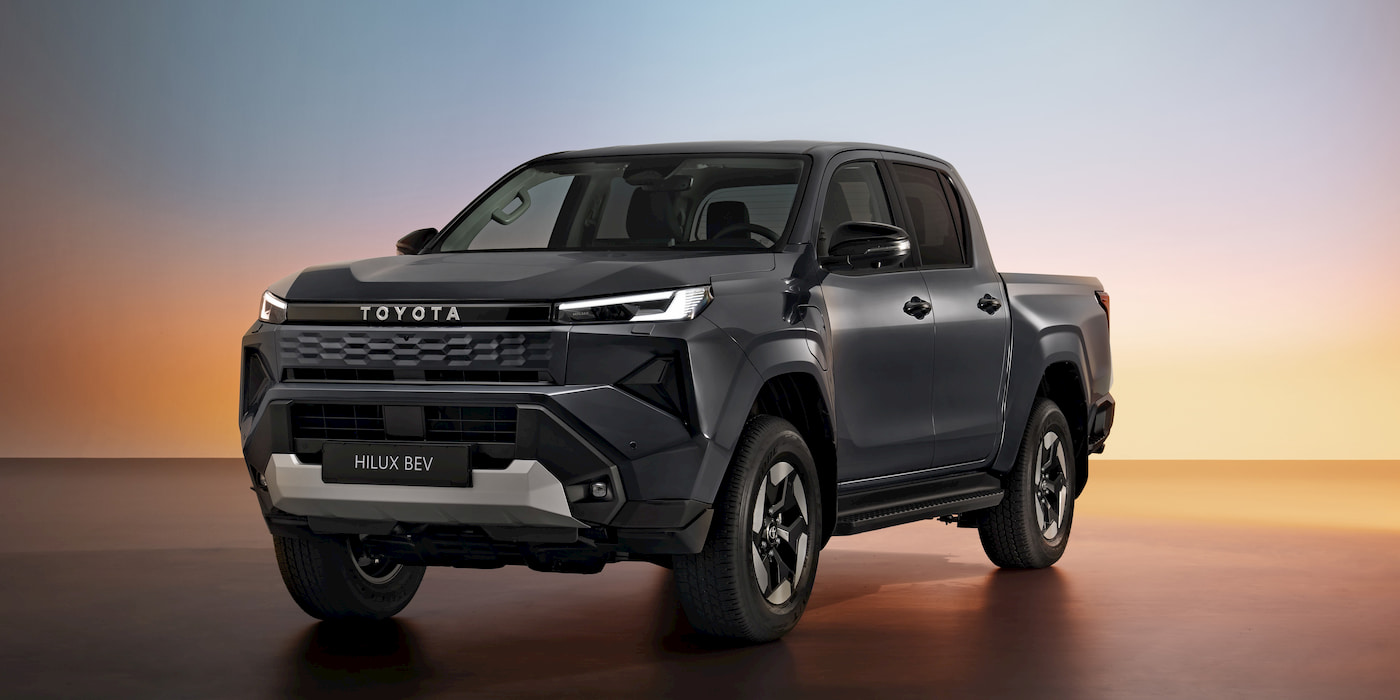Toyota has officially unveiled the fully electric version of its best-selling pickup, the Hilux, marking a significant step in the company’s transition to electric vehicles. The new model is set to begin rolling out in December 2025, although it will not be available in the United States due to ongoing tariffs and market restrictions.
The announcement came after a teaser campaign that hinted at the electric pickup’s debut. Toyota showcased the all-new Hilux during an event on Monday, introducing the first battery electric variant in its ninth generation. As part of this launch, the company confirmed that the Hilux will also continue to be offered in hybrid, diesel, and fuel-cell-electric versions.
Features and Specifications of the Electric Hilux
The electric Hilux presents a modern design characterized by its “Tough and Agile” aesthetic. Notably, it features slim LED headlights connected by a light bar that includes the Toyota logo. The traditional Hilux grille has been retained but is enhanced with new features like a rear deck step. The pickup will be available exclusively as a Double Cab.
Inside, the Hilux draws inspiration from the new Toyota Land Cruiser, outfitted with dual 12.3-inch driver displays and a central multimedia screen. All off-road control settings are centralized via a shift-by-wire drive selector, enhancing user experience. Key technological advancements include a wireless phone charger and multiple USB ports, catering to modern connectivity needs.
Toyota has emphasized that this electric pickup is the first in the Hilux lineup to utilize electric power steering, improving maneuverability and reducing feedback when traversing rough terrain. The Hilux also boasts a comprehensive suite of safety features, including the T-Mate advanced safety and driving assistance package. This upgrade extends Toyota Safety Sense, incorporating innovative functions like Low Speed Acceleration Suppression and an Emergency Driving Stop System.
Performance Capabilities and Future Plans
The Hilux electric variant is powered by a 59.2 kWh battery and features electric motors at both the front and rear, enabling it to tow up to 3,500 lbs (1,600 kg) with a maximum payload capacity of 1,500 lbs (715 kg). It offers a WLTP driving range of approximately 150 miles (240 km), highlighting Toyota’s commitment to delivering practical electric alternatives.
While specifics on charging capabilities remain undisclosed, the company claims it has “targeted best-in-class charging capabilities” to minimize downtime. In addition to the electric variant, Toyota plans to continue offering a 48V hybrid powertrain and a 2.8-liter diesel engine in select markets, particularly in Eastern Europe.
Looking to the future, Toyota has announced plans to launch a hydrogen fuel cell electric version of the Hilux by 2028. The rollout of the battery electric Hilux will primarily focus on markets in Europe, Australia, and Southeast Asia, although the company has yet to confirm specific launch dates for these regions.
The launch of the electric Hilux signifies Toyota’s strategy to adapt its iconic pickup for a new era of electrification. As the automotive industry increasingly prioritizes sustainability, the introduction of this model is expected to attract attention from environmentally conscious consumers looking for a reliable and capable electric vehicle.
